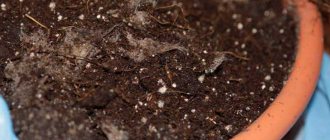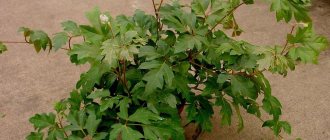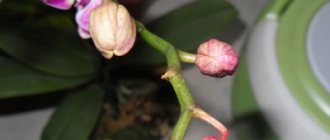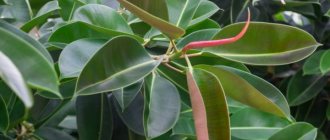Photo gallery
The milky sap secreted by ficus is poisonous, so access to it by children and pets should be limited.
The plant helps purify indoor air from harmful substances, including ammonia, formaldehyde and benzene.
Ficus Natasha - what it looks like, what family it belongs to
Natasha is a dwarf representative of the Mulberry family. There are more than 800 varieties of ficus in their natural habitat. Among them there may be vines, shrubs and trees. In the wild, the crop grows on tropical islands. Here the flower can grow up to 10 meters in height. Domestic varieties do not have such dimensions - they rarely reach 45 cm.
Additional Information. There are many varieties of Ficus Benjamin. The most popular of them are Barok, Natasha, Daniel, Anastasia.
Medicinal properties
Ficus Natali is a fairly common folk remedy. Tinctures, ointments and compresses are made from it. The plant helps with gynecological diseases, arthritis and radiculitis. It is believed that during epidemics it helps to destroy pathogenic bacteria.
Important! Before using ficus for medicinal purposes, you should definitely consult a doctor.
Origin of the name
This ficus variety was named after Benjamin Jackson. He was a famous British botanist at the beginning of the last century. The scientist is known as the creator of a flower guide, which describes more than 500 plant species.
Signs and superstitions
Ficus Daniel is able to benefit all household members. It helps improve a person’s emotional state and mood, relieves fatigue and depression.
The plant has the ability to influence people’s eloquence: those who find it difficult to express thoughts find it easier to conduct a dialogue, and overly talkative people learn to control their speech.
By planting a ficus in a green flowerpot, burying a few coins or bills in the soil and providing proper care, you can attract wealth and prosperity to your home.
A tree growing in a pink pot with hearts on it helps the owner find love or strengthen a marriage.
Married couples, placing a ficus tree at the head of the bed in the bedroom, can count on a quick pregnancy if they provide it with careful care.
Possible problems in cultivation and diseases
Ficuses are picky about location. If the tree is placed in one place, then it is better not to move it. Ficus Daniel is sensitive to any movement. Therefore, it is better to immediately choose a place for the permanent location of the plant. This rule is often used by many gardeners and house plant lovers. The variety is especially sensitive to changes in environment.
Ficus gives a feeling of comfort
Among the pests, Ficus is often affected by scale insects, false scale insects, mealybugs, whiteflies, aphids, and spider mites. It is popularly believed that any ficus brings a feeling of warmth and comfort to the house in which it grows well.
Is the plant suitable for bonsai formation?
This variety of ficus has a fairly high growth rate and active branching, which allows you to give the crown the desired appearance and form a miniature bonsai from the tree.
To do this, you need to plant the plant in a small flat pot and trim the roots every six months, shortening them by a third. When the ficus reaches the required height, you need to pinch the top, stimulating the growth of the crown in breadth.
Also, due to the flexibility of the trunks in young specimens, it is possible to form stem systems in the form of braids, spirals or lattices.
Expert opinion
Mokhov Andrey Petrovich
Graduated from KubSAU, specialty: agronomy
Formative pruning can only be done in spring, during the growing season.
Characteristics and appearance of ficus Benjamin Daniel
- A young ficus looks more like a small bush than an indoor tree. However, with proper care it can grow up to 2 meters.
- Ficus Benjamina Daniel has rich green foliage.
- Ficus is popular among plant growers because of its flexible branches, which can be braided into braids and spirals, thereby shaping the further appearance of the plant.
The foliage has different shades, depending on the age of the plant. Young ficus leaves have a light green tint, while adults have dark green leaves. The foliage can reach 13 cm in length and 6 cm in width.
Home care
Lighting and comfortable place
The light should be bright, but diffused. Exposing ficus foliage to direct sunlight causes it to yellow and lose its natural shine.
The most suitable place is the east, west, southeast or southwest side of the room. In the summer, the plant can be taken out into the garden or onto the balcony, shading it during the midday hours.
When choosing a place where ficus Daniel will be located, you need to take into account that it does not tolerate drafts and frequent movements.
Air temperature and humidity
The optimal temperature in spring and summer is +20–25 °C, in winter – not lower than +15 °C.
Humidity should be around 70%. The minimum acceptable rate is 50%; with drier air, the plant withers and dies. Several times a week you need to spray the ficus crown and give it a warm shower every month.
If there is a possibility of a decrease in temperature, it is necessary to insulate the flowerpot and place it on a pallet, and cover the ground with polyethylene.
How to properly care for a plant
Despite the apparent complexity, caring for a ficus named Daniel at home is not that difficult. Caring for this type of plant is much easier than its variegated counterparts. For the active growth of a tree, it will be enough to follow simple rules, which will be discussed below.
Lighting
Ficus Benjamina Daniel is a light-loving plant. But don't overdo it. He needs diffused daylight, but in no case direct sunlight. The ideal option for placing a ficus would be a window sill facing southeast, east or southwest. On particularly hot days, the scorching rays of the sun must be slightly weakened by shading.
In the summer, the plant will benefit from “walks” in the fresh air. It can be taken outside, onto the balcony, or left on the windowsill of an open window. But again, it is necessary to ensure that the plant is not in the direct rays of the scorching midday sun.
Important! If a flower is exposed to direct sunlight for a long time, it may get burned, as evidenced by loss of shine and yellowing of the leaves.
Temperature
Since Ficus Daniel is a tropical plant, the best temperature range for the flower will be +20 - +25C. In winter, it is necessary to ensure that the air temperature in the room does not fall below +15C. Due to the characteristics of its origin, ficus does not tolerate cold days well. Therefore, it is not recommended to leave a flower pot on a cold winter windowsill or in a direct draft.
Priming
The soil used for planting Daniel should be slightly acidic, but at the same time be loose, nutritious and moisture-absorbing. If you are planning to transplant your “pet,” you can purchase a special soil composition or prepare the substrate yourself. In this case, it is necessary to mix leaf and turf soil in equal parts, and then add half the volume of coarse sand.
Another option, ideal for ficuses, is a soil substrate consisting of leaf, turf and peat soil with sand, mixed in equal quantities.
Important! Under no circumstances should you use soil from your garden, front garden or nearby flower bed to plant a plant. Such soil can be used only after it has been cleared of pests using special compounds.
What kind of soil is needed?
The soil should be loose, nutritious, have good aeration and moisture capacity, and have neutral or weak acidity (pH 5.5–6.5).
You can use soil purchased at a specialized store and intended for growing ficus plants, or prepare a soil mixture yourself by mixing in equal parts:
Did you get a bonsai from Daniel?
Not really
- turf;
- leaf soil;
- coarse sand;
- peat.
To help the ficus take root, bone meal should be added to the substrate at the rate of 1 g per kg. soil.
You can disinfect the soil and get rid of pests and microorganisms in it using heat treatment or a manganese solution.
How much does it cost and how to choose
The Daniel variety can be bought in many online flower shops, but the pleasure is not cheap.
For a young plant, from 50 cm in height, you will have to pay at least 1000 rubles. A meter will cost even more - 1400-2000 rubles.
It is better to buy a one-year-old specimen so as not to have to guess whether it will take root.
When purchasing, you need to pay special attention to the condition of the crown. The leaves of a healthy plant are smooth and shiny, and the bark is light, without growths or cracks.
Transfer
The regularity of replanting depends on the individual characteristics of the ficus - the more intensively it grows, the more often it needs to replace the soil and flowerpot. On average, a young specimen needs to be replanted annually in the spring-summer period, a flower older than 4 years – once every 3-4 years.
The need for the procedure is indicated by:
- overgrown root system;
- presence of pests or diseases;
- unsuitable soil.
Also, a transplant is required at the end of the adaptation period after purchase.
For ficus Daniel, a pot made of porous material with drainage holes is suitable, the height of which should be about a third of the total size of the tree.
Expert opinion
Mokhov Andrey Petrovich
Graduated from KubSAU, specialty: agronomy
If the container is too large, the plant will direct all its energy to growing roots.
The most suitable method of transplantation is transshipment:
- At the bottom of the new pot, pour a layer of drainage consisting of pebbles, expanded clay or ceramic shards and sprinkle the prepared soil on top;
- water the plant generously and carefully remove it from the old flowerpot;
- place the ficus together with the earthen lump in the center of the new container;
- add soil, filling the voids, so that the root collar is flush with the ground;
- water the plant and place it in a warm, well-lit place.
Common problems
Daniel is growing up fast. Under favorable conditions, it can grow up to 1.5 meters in the first year of life, and then add 30 cm annually.
For some owners, this becomes a real problem, because such a large plant needs to be placed closer to the window so that it does not suffer from a lack of light. But it’s hot near the window during the heating season - the tree is located right next to the radiator, which causes trouble for flower growers.
Attention! Due to the rapid growth, you should not be late with pruning the plant. Branches that are too long have to be removed constantly, even in winter.
If you abandon a tree and don’t prune it for at least six months, it will turn into a shapeless bush with thickets growing straight from the root. The problem of root shoots is very acute with this ficus variety.
Reproduction
Ficus Daniel is propagated by cuttings, air layering and seeds.
By cuttings
The most common method at home, for which you need:
- prepare apical cuttings with growth buds and leaves;
- wash off the milky juice that appears, dry the sections and treat them with a growth stimulator - “Kornevin”, “Heteroauxin”;
- place the seedlings in a container with water, which subsequently needs to be changed every 2-3 days, or in a substrate consisting of equal parts of perlite or coarse sand and peat;
- cover the container with polyethylene and keep at a temperature of +22–25 °C, ventilating regularly.
The roots should appear after 2-3 weeks, after which the cuttings must be planted in separate flowerpots with soil suitable for adult ficuses.
Air layering
This method requires a woody shoot, at the edge of which you need to make an incision and remove part of the bark. Wash off the juice from this area, treat it with Kornevin, wrap it in damp sphagnum moss and cover it with polyethylene.
After 3-4 weeks, roots will begin to grow through the moss. After they appear, the resulting shoot should be cut off and planted in a separate container with a suitable soil mixture. This method can be used before the start of the growing season.
Seeds
First of all, planting material should be treated with a growth stimulator and fungicides (Fundazol). After this, sow the seeds on the surface of loose soil, cover the container with polyethylene or glass to create a greenhouse effect and place it in a well-lit place at a temperature of +22–25 °C, constantly ventilating and watering.
After 10–15 days, seedlings appear that need to be picked and later planted in individual flowerpots.
Ficus Viandi
A small tree with a bizarrely curved trunk fits very organically into the interior of the apartment. The Viandi variety has a special form of branch growth, for which it is loved by many gardeners. It is no less interesting to read about Palmer’s ficus and its features.
Viandi ficus where to buy and its price, description
Ficus Viandi can be purchased from flower growers through private advertisements on the Internet or in a flower shop. In the first case, its cost can be low - from 100 rubles and more, depending on the appearance and age of the plant. In the store the cost of a ficus will be about 500 rubles.
Ficus Viandi is similar in appearance to Ficus Benjamin. It has the same small green leaves. But there are also differences: the branches of Viandi are quite fragile, so weaving figures from them into several trunks will not work. It is worth reading about ficus Regidan and its features.
The branches of the ficus Viandi grow, forming an angle of 90 degrees with each other. Often this ficus is used to form a decorative bonsai tree.
Ficus Benjamina Wiandi (Ficus Benjamina Wiandi) propagation and transplantation
Ficus is replanted as it grows. The planting container must correspond to the size of the root system; ficuses do not like pots that are too spacious. The soil is bought at a flower shop. A universal substrate or soil mixture for ficus plants is suitable.
Drainage made of pebbles or clay shards is placed at the bottom of the pot with holes for draining water, and soil is poured on top. The plant is planted without shaking off the roots from the old soil. Sprinkle the roots with soil and water with clean, settled water at room temperature.
Ficuses do not bloom indoors, so you will not be able to propagate the plant with seeds yourself. Cut branches - cuttings take root well in water or a nutritious light substrate.
If you root cuttings in the soil, you need to cover them with film or a jar, making a greenhouse. You cannot pour cuttings in the soil with water; they are watered as the soil dries out. In another article, read tips for ficus Starlight and more.
Diseases and pests of ficus Viandi
If not cared for properly, the ficus may get sick. The leaves will begin to turn yellow and fall off. In order for the plant to grow well at the first sign of the appearance of insect pests (midges, mosquitoes, worms, etc.), the plant is treated with an insecticide (Aktara).
If the plant is infected with fungal diseases, an unpleasant odor emanates from the soil, plaque spots appear on the leaves, they are treated with fungicides. Acaricides are used to combat spider mites.
Loading …
To reduce the risk of disease, it is necessary to keep all new plants brought into the house in quarantine, separately from other indoor flowers. It is useful to fertilize with fertilizers.
Ficus Viandi care at home: watering, fertilizing, pruning and shaping
Ficus Viandi has a very interesting shape. Therefore, to form it, selective pruning of shoots is used, maintaining the natural appearance of the plant. In order for a young plant to grow vertically, it is tied to a support.
Caring for ficus involves timely but moderate watering. This light-loving plant must be placed in a well-lit place, protected from direct sunlight. No less interesting is the article about small-leaved ficus.
Fertilizer feeding begins in March, April and ends in October or November. Complex fertilizers are added to water for irrigation once every 14 days. Once a month, foliar feeding and growth stimulation are carried out by spraying ficuses with water with the addition of Epin or fertilizers.
xlosa.com
Watering
The frequency of watering depends on the rate of drying of the top layer of soil - drying out the roots is detrimental to the plant, as well as waterlogging them.
As a rule, it is necessary to moisten the soil twice a week in summer and 2-3 times a month in winter.
The liquid flowing into the pan must be drained, otherwise there is a risk of developing root rot.
The water should be at room temperature, soft, and left for 24 hours.
If you are going on vacation
You can preserve moisture in the flowerpot for a while by laying hydrogel or damp sphagnum moss on the top layer of soil and covering the plant with polyethylene.
Diseases. Table
| Disease | Signs | Cause | Treatment |
| Powdery mildew | The appearance of white pellets on the leaf plates | Keeping at high temperature and humidity | Cut off the affected parts of the plant, treat with fungicides (Bona Forte, Storby) |
| Root rot | Withering and falling leaves, rotting roots | Excessive watering in combination with low air temperatures | Carry out a transplant, completely replacing the soil and flowerpot, remove all diseased areas of the root system, treat the ficus with the preparation “Maxim”, “Glyokladin” or “Discor” |
When to transplant into a large pot
You start thinking about choosing a new home for a tree when the root system begins to grow out of the drainage holes. Sometimes the roots can be seen on the surface of the soil layer. There is also a need for replanting when the tree grows in an uncomfortable, small transport pot. It is impossible to grow and develop normally when constrained.
It is also necessary to replant a tree into a large pot when the need for propagation arises in order to obtain new young plants. These factors indicate that the time has come to transplant the green tree into a large pot.
Problems with leaves. Table
| Problem | Cause | Solution |
| Premature yellowing and crown drop | Overwatering | Establish soil moisture regime |
| Intensive leaf fall | Lack of lighting, drafts, frequent changes of location | When daylight is short, use phytolamps, eliminate the possibility of drafts, do not move the flowerpot |
| The tips of the leaves have become dry and have acquired a brown tint. | Low air humidity | Spray the plant regularly |
How to replant a ficus after purchase
Not all housewives know how to properly replant a plant after purchase without much difficulty. However, this is the most important procedure for maintaining life. Homemade ficus also needs good care with proper watering.
we replant ficus benjamina after purchase
It is not recommended to change the place of residence of the plant immediately after purchase. The transplant procedure can be done only if a fungal infection or mold has appeared in the soil. To take root in a new place, the tree needs a couple of weeks to acclimatize. After a period of adaptation, they begin the procedure itself, using soil that was prepared in advance. You need to change housing no later than a month after purchase. You should not buy soil with an acidity level that exceeds the norm.
Important! Do not use soil with a high level of acidity, no higher than 6.5 pH!
Transplant algorithm:
- Prepare a nutritious soil mixture.
- We put any drainage in the pot and fill it with river sand.
- We water the small tree 1-2 days before the procedure.
- We take it out of the old shipping container, remove the soil and rotten roots.
- We move the ficus into the new house and fill it with pre-prepared soil.
- Water a little from a watering can.
This will help! During the procedure, the green crop experiences stress. Full watering is contraindicated; you need to regularly spray the leaves with warm water.
Pests. Table
| Pest | Signs | Ways to fight |
| Mealybug | Yellowing of the crown, formation of white pellets on the leaves | Spray the plant with Fitoverm or Confidor |
| Spider mite | The appearance of white dots on the back of leaf blades and thin cobwebs on branches and leaves | Treat the tree with insecticides “Akarin”, “Omite”, “Apollo” |
| Shchitovka | The appearance of a sticky coating on the trunk and leaves | Moisten a piece of cloth or a cotton pad in a soap solution and remove insects mechanically, treat the ficus with “Aktara”, and a week later with “Confidor” or “Commander” |
| Aphid | The foliage becomes pale, a white coating appears on it, and begins to fall off over time. | Treatment with soap-alcohol solution and insecticides (“Akarin”, “Fufanon”) |











